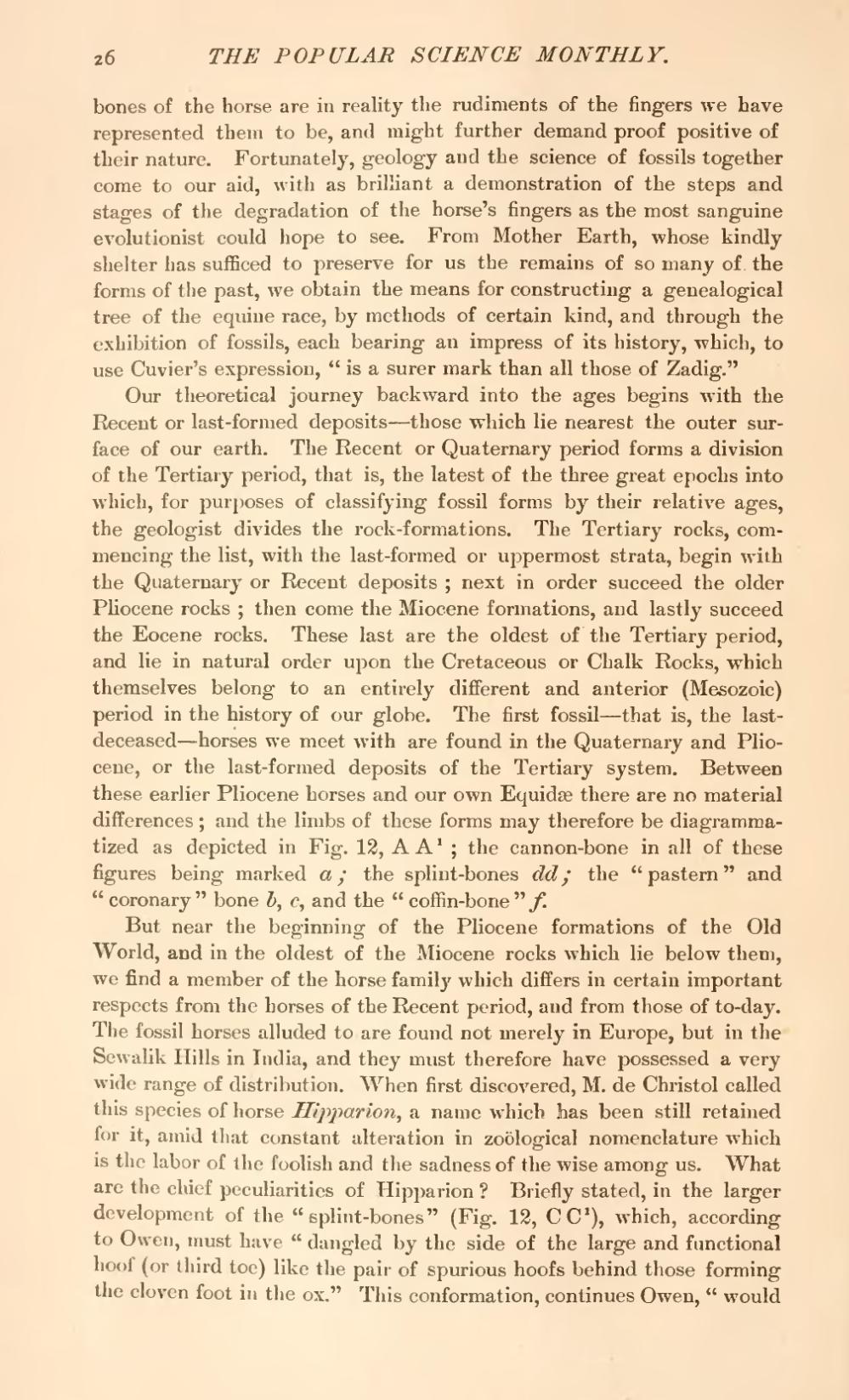bones of the horse are in reality the rudiments of the fingers we have represented them to be, and might further demand proof positive of their nature. Fortunately, geology and the science of fossils together come to our aid, with as brilliant a demonstration of the steps and stages of the degradation of the horse's fingers as the most sanguine evolutionist could hope to see. From Mother Earth, whose kindly shelter has sufficed to preserve for us the remains of so many of. the forms of the past, we obtain the means for constructing a genealogical tree of the equine race, by methods of certain kind, and through the exhibition of fossils, each bearing an impress of its history, which, to use Cuvier's expression, "is a surer mark than all those of Zadig."
Our theoretical journey backward into the ages begins with the Recent or last-formed deposits—those which lie nearest the outer surface of our earth. The Recent or Quaternary period forms a division of the Tertiary period, that is, the latest of the three great epochs into which, for purposes of classifying fossil forms by their relative ages, the geologist divides the rock-formations. The Tertiary rocks, commencing the list, with the last-formed or uppermost strata, begin with the Quaternary or Recent deposits; next in order succeed the older Pliocene rocks; then come the Miocene formations, and lastly succeed the Eocene rocks. These last are the oldest of the Tertiary period, and lie in natural order upon the Cretaceous or Chalk Rocks, which themselves belong to an entirely different and anterior (Mesozoic) period in the history of our globe. The first fossil—that is, the last deceased—horses we meet with are found in the Quaternary and Pliocene, or the last-formed deposits of the Tertiary system. Between these earlier Pliocene horses and our own Equidæ there are no material differences; and the limbs of these forms may therefore be diagrammatized as depicted in Fig. 12, A A 1; the cannon-bone in all of these figures being marked a; the splint-bones dd; the "pastern" and "coronary" bone b, c, and the "coffin-bone" f.
But near the beginning; of the Pliocene formations of the Old World, and in the oldest of the Miocene rocks which lie below them, we find a member of the horse family which differs in certain important respects from the horses of the Recent period, and from those of to-day. The fossil horses alluded to are found not merely in Europe, but in the Sewalik Hills in India, and they must therefore have possessed a very wide range of distribution. When first discovered, M. de Christol called this species of horse Hipparion, a name which has been still retained for it, amid that constant alteration in zoölogical nomenclature which is the labor of the foolish and the sadness of the wise among us. What are the chief peculiarities of Hipparion? Briefly stated, in the larger development of the "splint-bones" (Fig. 12, C C1), which, according to Owen, must have "dangled by the side of the large and functional hoof (or third toe) like the pair of spurious hoofs behind those forming the cloven foot in the ox." This conformation, continues Owen, "would
